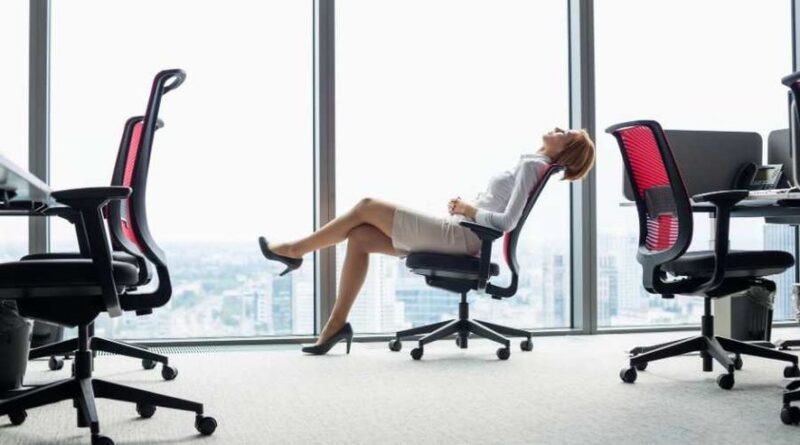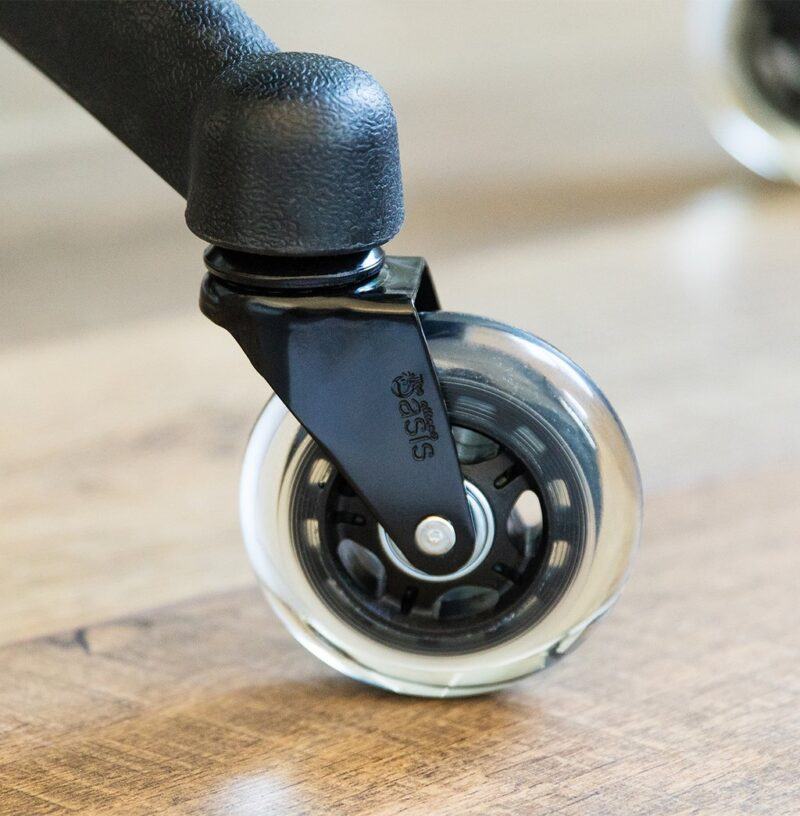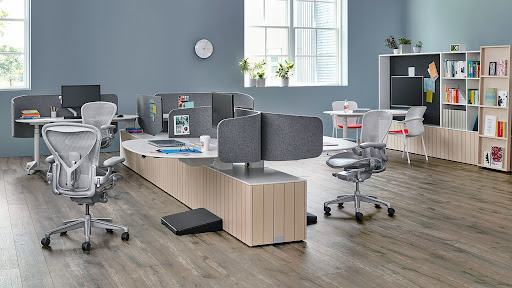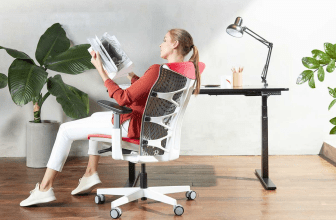
A leaning chair may bring a health risk to us. If your office chair leans back, it may cause spinal cord issues, neck pains, and backaches.
In this article, FittingChairs will share with you about ways for how to fix an office chair that leans back.
Why does my chair keep leaning back?
Before getting to know how to fix an office chair that leans back, you need to find out the causes. Why won’t my office chair lean back?
There must be some reasons behind office chair stuck leaning back. The wheel, seat height, backrest of your office chair, or anything else could be the reason for this chair issue.
It is essential to identify the exact causes to fix the problem quickly.

Keep reading to find out how to fix an office chair that leans back.
How to fix an office chair that leans back?
After finding out the reason why, let’s move on to how to stop office chair from leaning back.
Quick fix for leaning office chair
Here are quick methods for how to fix an office chair that leans back:
- Open every part of your chair.
- Realign your arms and back.
- Reinstall the wheels. You can replace the old ones.
- Assemble everything together.
- Look for any missing screw.
- Tighten all the screws.
- Reinstall the black plate under your chair seat.
- Check if it is working or not.
If this process still does not work for you, it is better to take your furniture to the expert. This can save you a lot of time and your money too.

How to fix an office chair that leans back?
The first step of how to fix an office chair that leans back is to sit on the chair to find the problem. Is it leaning or tilting?
Unsuitable tilt tension
Your office chair tilt tension may loosen and cause your chair to lean back after a long using time.
While sitting on the desk chair, check how far its tilts with your entire back weight supported against the backrest.
Grab your tilt knob on your chair’s underside while still seated. Then turn your adjustable knob to angle the chair forward.
Release your tilt knob once you attain your preferred maximum tilt.
Faulty wheels
Check the wheels for any potential leaning causes. When it comes to wheels, the chair usually leans towards the side of the deformed or broken wheel.
So, if your chair is leaning back, the issue could be your rear casters.
If your floor is uneven, not all your casters can touch the floor, and the reason for your leaning is the bent surface.
If you find both or one of the hind wheels is the issue, replace your current damaged casters with new ones with a matching pair, which allows you to replace only the broken caster and keep the rest for the next time you need to replace a damaged wheel.

Before inserting the new wheels into your chair base, squirt a small amount of WD40 into the wheel sockets. Lubricating is essential since casters are less challenging to pop out than insert into their sockets.
Missing screw
Missing screws may also result in your chair leaning back. Most office chairs have a heavy-duty design which may result in a few screws unfastening.
If you discover missing screws, examine the area close to your office chair to determine if they are still there. But if you can’t find them, get new screws. Get the high-quality bolts and barrel nuts kit to fix now.
Typically, the screws that pop out of the office chair are miniature-sized. Confirm your chair’s screws sizes before purchasing replacements to ensure they fit your chair.
Seat plate inspection
All hydraulic office chairs feature a black plate, which include hydraulic levers, bolts, screws, and adjustment levers.
Confirm that all bolts and screws on this plate are adequately tight and available. If not, fasten the loose ones with your screwdriver and get replacements for the lost ones.
Aside from some missing components, a damaged black plate may result in your chair leaning back. A faulty seat plate may not adjust accordingly, resulting in backward tilting.
Usually, you can’t repair a damaged one, so you have to replace the seat plate.
You can refer to these following choices of seat plate to replace:
Tips to maintain your office chair
Like other office appliances and furniture, your office chair needs regular maintenance and cleaning to ensure its extended life and prevent malfunctioning.

Below are some essential caring tips for the chair to maintain your chair regularly:
- Clean your chair properly.
- Try to vacuum the dust particles from the seat of your chair.
- Clean and lubricate the casters of your chair as it can clog by dust and gunk, and this will obstruct your chair’s movement.
- If your office chair keeps constantly sinking while you sit down, replace the gas cylinder of the chair to keep your feet flat and maintain proper height.
- Try to keep your chair away from direct sunlight as the UV rays can damage the fabric and other materials of your chair.
- You should tighten the fasteners of your office chair since loose fasteners can cause tilt back or forward problems.
- If you have a leather chair, apply conditioner once every few months to prevent drying out.
See more:
Above are all about how to fix an office chair that leans back. If you find this article of FittingChairs helpful, please save and share this with your friends.






